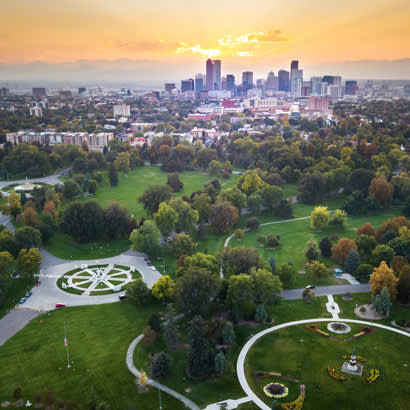
Here’s something every park and recreation professional knows: parks, trails and greenways are a good investment for communities. But simple statements like this have limited use unless they are backed up by data and research. The community – and particularly local government decision-makers – want to see facts and figures on how investing in these public areas are a good use of limited public dollars. While telling the story of your local agency is vital to advocacy, so is having solid research to rely on.
The good news is that there is growing evidence of parks and recreation’s economic power. Recently, the Community Preventive Services Task Force (CPSTF) announced a new finding that the economic benefits exceed the costs for park, trail and greenway infrastructure. This conclusion comes from a review of published research from around the world. The review found investment in parks, trails and greenways resulted in an economic value higher than the initial investment amount. Economic benefits included improved health due to physical activity or the value of the infrastructure to users for recreation or relaxation.
The new economic finding builds off a previous CPSTF finding that recommended park, trail and greenway infrastructure, when combined with additional interventions, increases physical activity. So, it's a powerful thing when the leading public health panel in the nation concludes:
"Economic benefits exceed the cost for improvements to park, trail and greenway infrastructure. Such improvements, combined with structured programs or transportation connections, increase physical activity."
But let’s not just take their word that parks and recreation drives economic activity. Consider these reports, including those from NRPA:
- NRPA’s The Economic Impact of Parks Report: Local park and recreation agency operations and capital spending were responsible for $218 billion in economic activity and supported nearly 1.3 million jobs in 2019.
- NRPA’s Engagement with Parks Report: 84 percent U.S. adults seek high-quality parks and recreation when choosing a place to live.
- Outdoor Recreation Satellite Account from the Bureau of Economic Analysis: The outdoor recreation economy accounted for $454.0 billion of gross domestic product (GDP), or 1.9 percent, of the U.S. economy in 2021 .
- NRPA’s Promoting Parks and Recreation’s Role in Economic Development Report: High-quality parks and recreation can play a pivotal role in attracting and retaining quality businesses.
- Area Development’s Annual Corporate Survey: Quality of life is the second most important factor (87 percent) that companies consider when selecting a site for a facility (e.g., headquarters, factories, warehouses)
Together with NRPA’s research reports, the new CPSTF economic finding lends even more credibility to the statement we started this blog with: parks, trails, and greenways are a good investment for communities. Do you want to champion your local parks and trails as catalysts for physical activity and overall community health? If so, check out the Active Parks! Implementation Guide NRPA produced in partnership with the Centers for Disease Control and Prevention (CDC).
Austin Barrett (he/him) is an Evaluation Manager with NRPA.
Kevin Roth(he/him) is Vice President of Research, Evaluation, and Technology with NRPA.
Authors Note: The CPSTF is an independent, nonfederal panel of public health and prevention experts appointed by the CDC Director. The CPSTF’s charge is to identify population health interventions that are scientifically proven to save lives, increase lifespans, and improve quality of life. Their findings help inform decision-makers in federal, state and local health departments, other government agencies, communities, healthcare providers, employers, schools and research organizations. To learn more about the CPSTF, visit their website.

